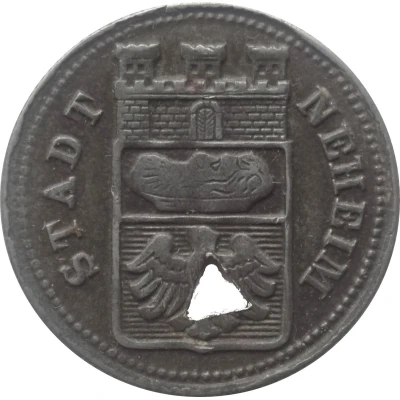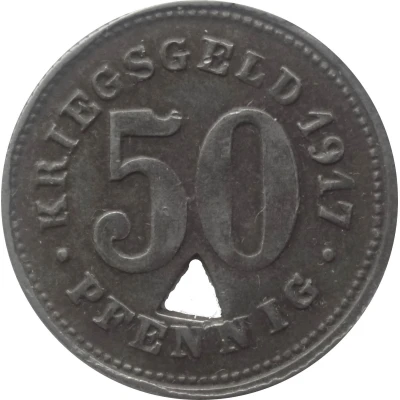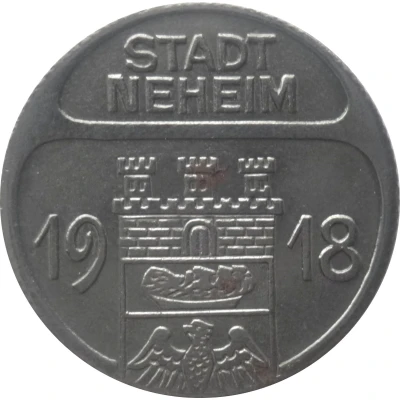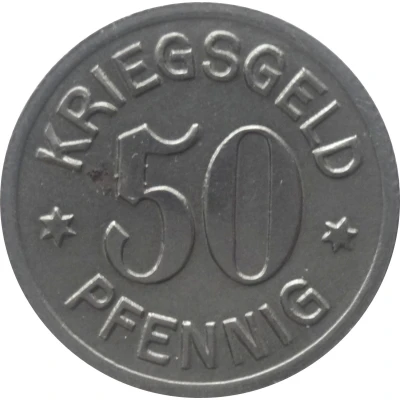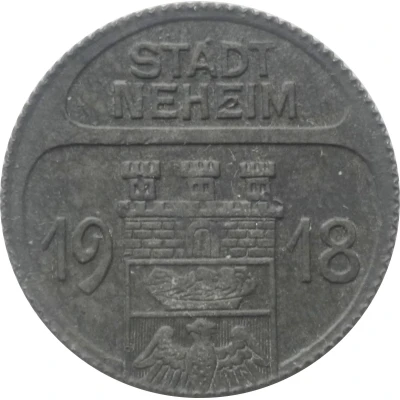
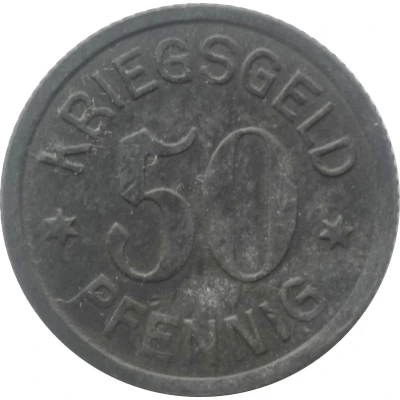

© Willem63 (CC BY-NC-SA)
50 Pfennigs - Neheim
1918 year| Zinc | 2.2 g | 20.2 mm |
| Issuer | City of Neheim (Prussian province of Westphalia) |
|---|---|
| Type | Standard circulation coin |
| Year | 1918 |
| Value | 50 Pfennigs (50 Pfennige) (0.50) |
| Currency | Mark (1914-1924) |
| Composition | Zinc |
| Weight | 2.2 g |
| Diameter | 20.2 mm |
| Thickness | 1.3 mm |
| Shape | Round |
| Technique | Milled |
| Orientation | Medal alignment ↑↑ |
| Demonetized | Yes |
| Updated | 2024-10-04 |
| Numista | N#347279 |
|---|---|
| Rarity index | 90% |
Reverse
Legend surrounding denomination centered
Script: Latin
Lettering:
KRIEGSGELD
50
★ PFENNIG ★
Edge
Reeded
Interesting fact
The 50 Pfennigs - Neheim 1918 coin was minted during a time of economic crisis in Germany, known as the "Inflationary Period" (1914-1923). During this time, the value of the German mark (the national currency) dropped significantly, leading to a period of hyperinflation. As a result, many Germans turned to alternative forms of currency, such as local emergency currencies like the 50 Pfennigs - Neheim 1918 coin. This coin was issued by the City of Neheim in the Prussian province of Westphalia and was made of zinc, which was a more affordable material than traditional metals like gold or silver. Despite its low value, the coin remains a unique and interesting piece of history for collectors today.
